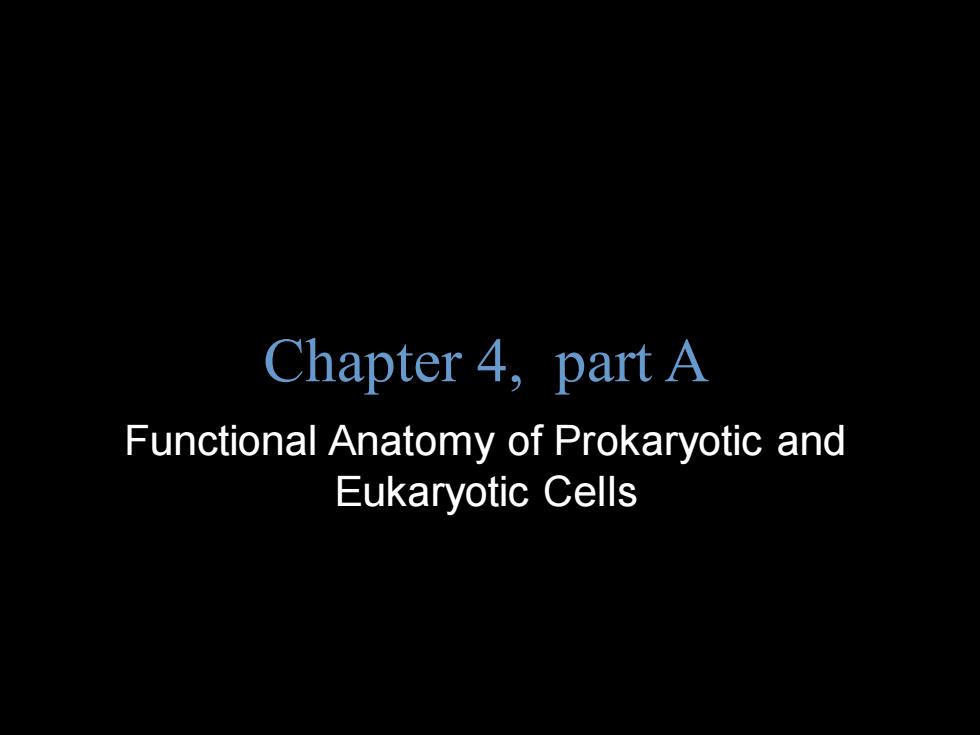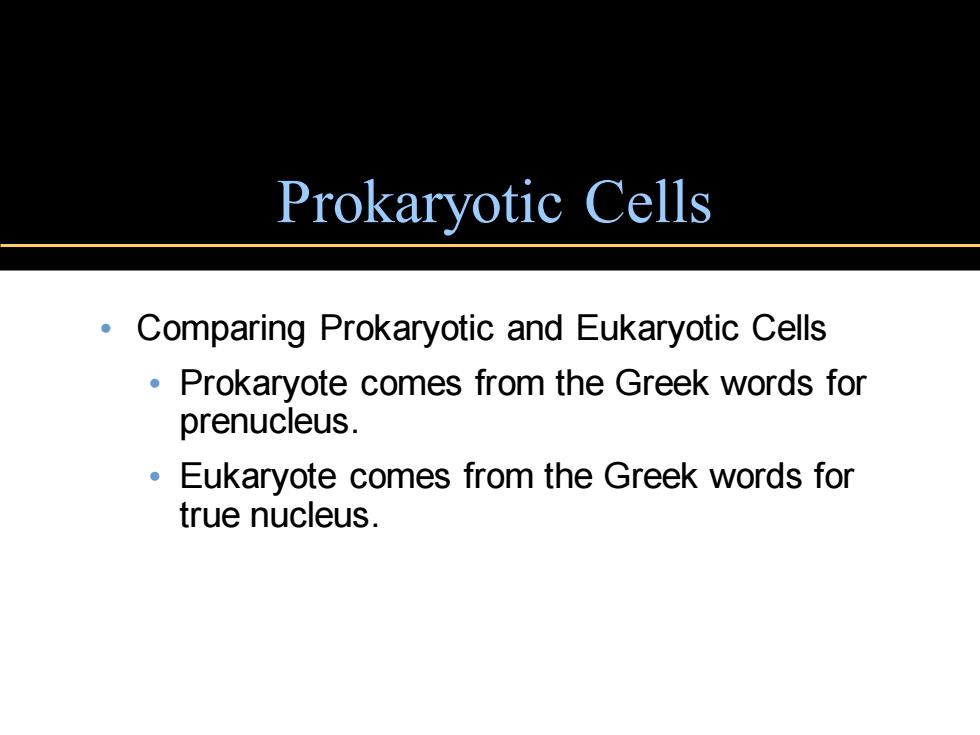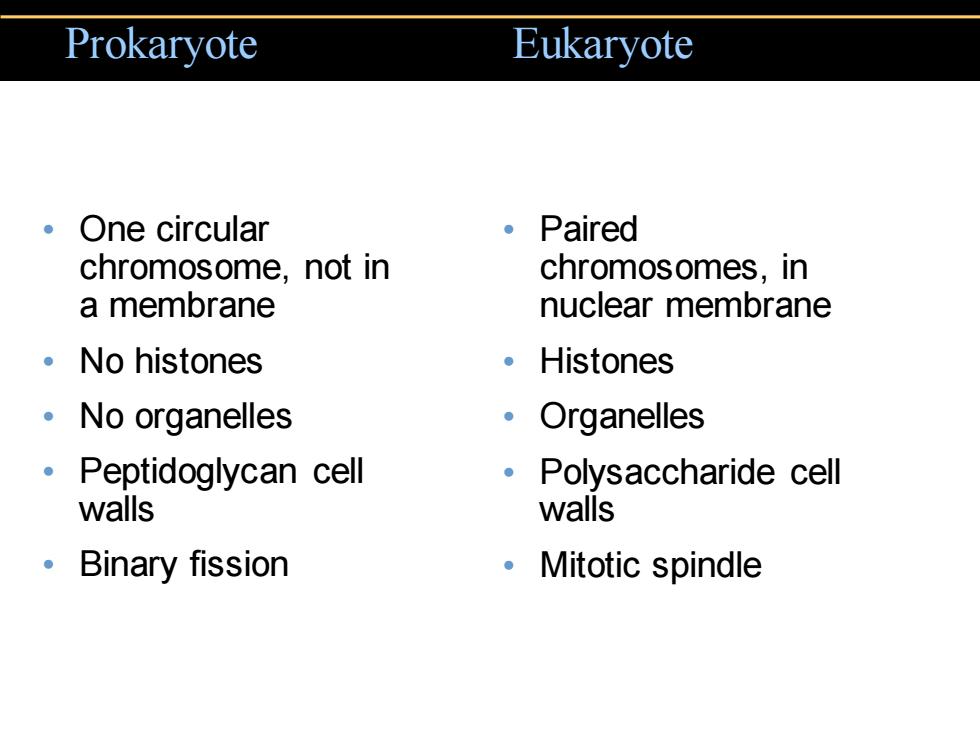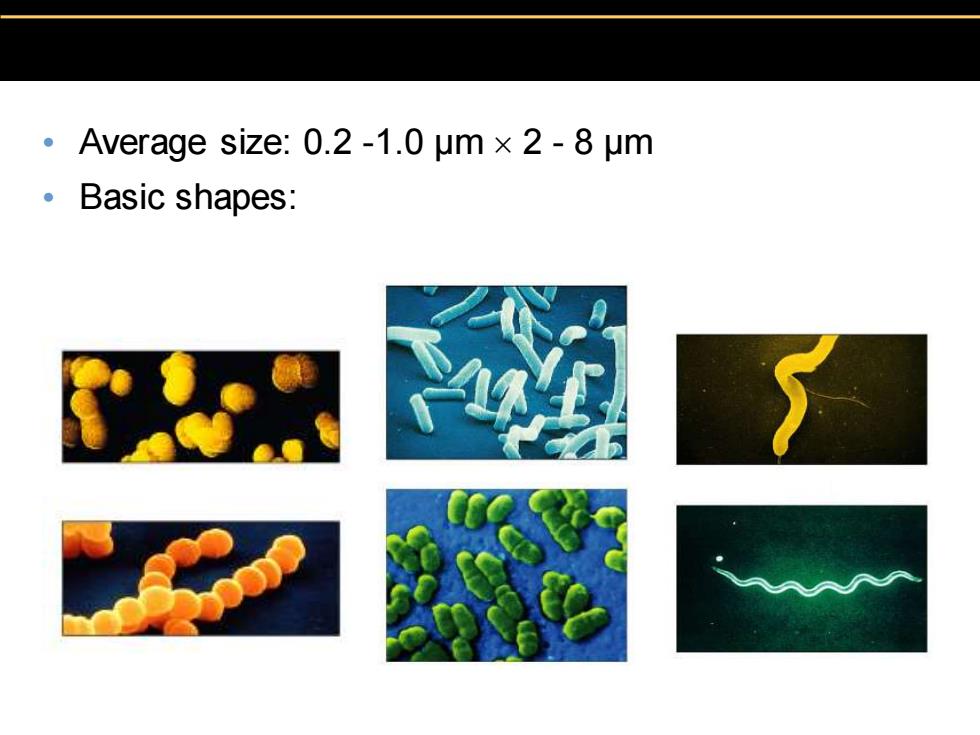
Chapter 4,part A Functional Anatomy of Prokaryotic and Eukaryotic Cells
Copyright © 2004 Pearson Education, Inc., publishing as Benjamin Cummings B.E Pruitt & Jane J. Stein Chapter 4, part A Functional Anatomy of Prokaryotic and Eukaryotic Cells

Prokaryotic Cells 。 Comparing Prokaryotic and Eukaryotic Cells Prokaryote comes from the Greek words for prenucleus. Eukaryote comes from the Greek words for true nucleus
Prokaryotic Cells • Comparing Prokaryotic and Eukaryotic Cells • Prokaryote comes from the Greek words for prenucleus. • Eukaryote comes from the Greek words for true nucleus

Prokaryote Eukaryote One circular 。Paired chromosome,not in chromosomes,in a membrane nuclear membrane 。No histones 。Histones 。No organelles ·Organelles ·Peptidoglycan cell ·Polysaccharide cell walls walls ·Binary fission 。Mitotic spindle
• One circular chromosome, not in a membrane • No histones • No organelles • Peptidoglycan cell walls • Binary fission Prokaryote Eukaryote • Paired chromosomes, in nuclear membrane • Histones • Organelles • Polysaccharide cell walls • Mitotic spindle

。Average size:0.2-1.0μm×2-8μm 。Basic shapes:
• Average size: 0.2 -1.0 µm 2 - 8 µm • Basic shapes:

Unusual shapes ·Star-shaped Stella ·Square Haloarcula Most bacteria are monomorphic 。A few are pleomorphic (a)Star-shaped bacteria (b)Rectangular bacteria Figure 4.5
• Unusual shapes • Star-shaped Stella • Square Haloarcula • Most bacteria are monomorphic • A few are pleomorphic Figure 4.5